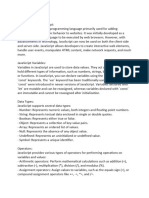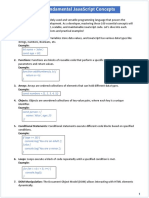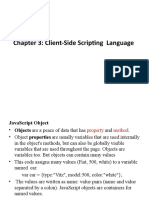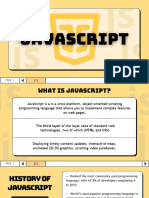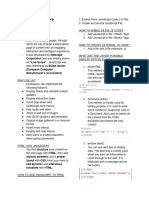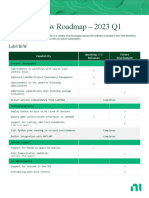0% found this document useful (0 votes)
15 views14 pagesWeb Tech Unit 2 Part2
The document provides an overview of advanced JavaScript topics, focusing on its object-oriented nature, built-in objects, the Document Object Model (DOM), and form handling with validation techniques. It covers key characteristics of JavaScript, methods for creating and manipulating objects, and the structure and manipulation of the DOM. Additionally, it discusses form validation methods and best practices to ensure data quality and enhance user experience.
Uploaded by
sr1979605Copyright
© © All Rights Reserved
We take content rights seriously. If you suspect this is your content, claim it here.
Available Formats
Download as PDF, TXT or read online on Scribd
0% found this document useful (0 votes)
15 views14 pagesWeb Tech Unit 2 Part2
The document provides an overview of advanced JavaScript topics, focusing on its object-oriented nature, built-in objects, the Document Object Model (DOM), and form handling with validation techniques. It covers key characteristics of JavaScript, methods for creating and manipulating objects, and the structure and manipulation of the DOM. Additionally, it discusses form validation methods and best practices to ensure data quality and enhance user experience.
Uploaded by
sr1979605Copyright
© © All Rights Reserved
We take content rights seriously. If you suspect this is your content, claim it here.
Available Formats
Download as PDF, TXT or read online on Scribd
/ 14

